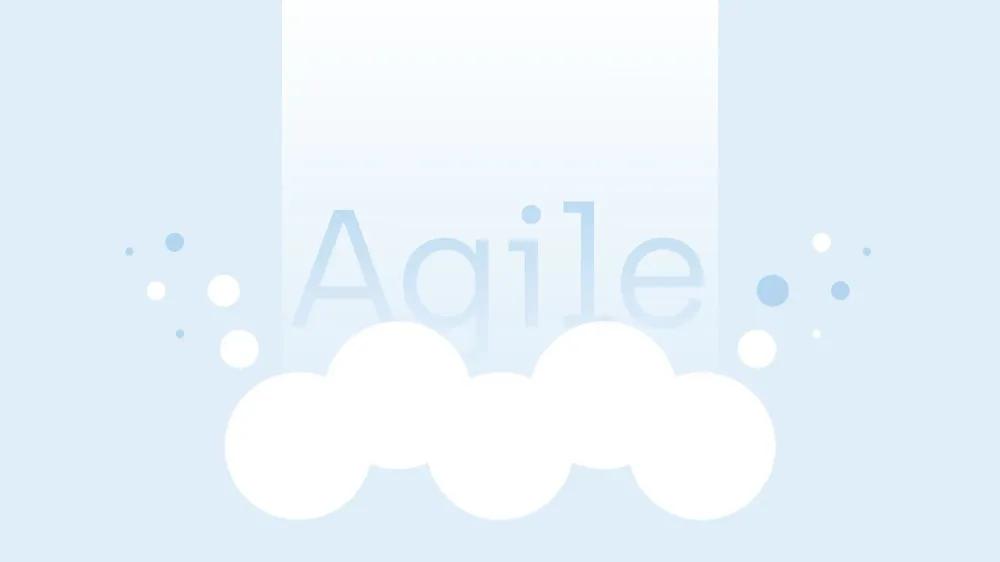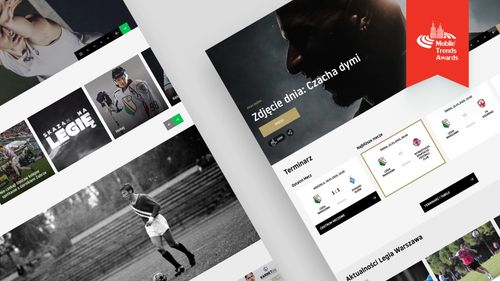Waterfall vs Agile Methodologies: What Are the Differences and Which One Should You Use?

Filip Niedziela

When it comes to project management, two methodologies that have gained popularity in recent years are Waterfall and Agile, particularly in software development projects. A recent study shows that since using Agile, companies have seen an average 60% increase in revenue and profit. Although both methodologies have their strengths and weaknesses. It's important to determine which is best suited for your project. This article aims to delve into the distinctions between the Waterfall and Agile methodologies, highlighting their pros and cons and giving instances where each might be the ideal choice.
Welcome to "From Zero to Hero," a series designed for learning fundamentals. In just under 10 minutes of reading, we'll help you understand complex concepts in a simple and easy-to-follow manner. In this episode, we will explore project management methodologies, emphasising two of the most widely used approaches: Agile vs Waterfall methodologies.
What are project management methodologies?
Let's start with a short explanation of what project management methodologies are. Well, managing a project from start to finish requires project management methodologies. These methods include frameworks, processes, and techniques. Why? To ensure the project is completed on time, within budget, and meets stakeholders' expectations. It's crucial to utilize these methodologies to ensure successful project completion.
These structured approaches can help your team easily plan, execute, monitor, and control projects. However, it's important to note that not all methodologies are created equal.
The right choice depends on considering constraining factors, like the three elements of the project triangle – scope, time and cost. That's why we're here to break down two popular methodologies, Agile and Waterfall, and show you how to choose the best one for your project.
By selecting a suitable methodology, you can maximize your chances of success and confidently achieve your project goals. Let's dive in!
Waterfall project management methodology in software development


The Waterfall model, named after the software development model developed in the 1970s by Winston w. Royce. It is a project management approach that adopts a sequential progression. During this linear process, each phase flows into the next like a waterfall. It entails completing each phase in a specific order, whereby each step must be accomplished before proceeding to the next. The typical steps involved in this model are as follows:
Requirements gathering
The initial stage in the project lifecycle, the requirements-gathering phase, is crucial in the waterfall methodology. It involves gathering and documenting all necessary information and requirements from stakeholders to comprehend the project's goals and objectives fully.
To achieve this, the project team conducts interviews, surveys, and workshops with stakeholders to collect information on the project's scope, objectives, constraints, and timelines. The team then documents these requirements in a detailed document. Outlines the project's features, functionalities, and specifications.
The requirements document serves as a blueprint for the project, providing a clear roadmap for the design and development stages. Therefore, completing the requirements-gathering phase is critical to the project's success. It ensures that the project meets the needs and expectations of stakeholders and provides a solid foundation for the subsequent stages in the project lifecycle.
Design System
The design phase plays a vital role in the project lifecycle when following the waterfall methodology. At this stage, the project team takes the requirements document developed in the previous step and creates a comprehensive blueprint or plan.
This phase involves creating a high-level architecture for the project, which includes the system's overall structure, layout, and flow. Furthermore, the team creates detailed designs for individual components or modules of the project.
During the design, the project team considers scalability, maintainability, and usability factors to ensure the project meets all the requirements. The design phase typically consists of several sub-phases, such as conceptual design, functional design, and technical design.
Successful completion of the design phase is a critical milestone in the project lifecycle. It provides a clear roadmap for the implementation and testing phases. Also, it ensures that the project meets all the requirements.
Implementation
The third phase is known as the implementation phase. At this stage development team implements the project plan, and the project development commences.
The implementation phase requires a high level of technical expertise. It involves coding or building the project based on the detailed design plan created in the previous step. The project team must ensure that the project is built according to the specifications outlined in the design plan.
The project is divided into different components or modules, each with a specific focus. To ensure that the project is on track, the team should monitor its progress continuously and address any issues or delays promptly.
Completing this phase marks a significant milestone in the project lifecycle. Transitioning from planning to execution and setting the stage for the testing and deployment phases.
Testing
In the waterfall model, the testing phase is very important in the project lifecycle. Its main aim is to ensure that the project meets all the requirements, functions as intended, and is ready for deployment.
In the testing phase, several tests and quality checks detect and correct any defects or bugs in the project. Functional testing ensures that the project meets all the requirements and functions as expected. Non-functional testing, on the other hand, tests for performance, scalability, and security.
The testing phase typically comprises unit testing, integration testing, system testing, and acceptance testing. Upon completion of all the tests, the project team will review and analyze the results to identify and resolve any issues that may arise. The testing phase is a critical milestone in the project lifecycle. Ultimately, it confirms that the project is ready for deployment and meets all the requirements.
Deployment
The deployment phase in the waterfall methodology is the final step of the project lifecycle and software development. It involves releasing the completed project to stakeholders and making it available.
Before deployment, the project team ensures that the project meets all requirements and has undergone thorough testing. The deployment phase also includes planning and executing the project release, which may involve training or support for end-users.
Once the project is released, the team closely monitors its performance and makes any necessary adjustments or fixes based on stakeholder feedback. Overall, this phase is critical as it marks the end of the project and the start of its operational phase.
Successful deployment ensures that the project meets all the requirements and satisfies the stakeholders.

Why choose the Waterfall project management methodology?
Markedly, the Waterfall method emphasizes completing each step thoroughly before proceeding to the next. Why? To minimize errors and ensure the final product meets all requirements. It is best suited for projects with a clearly defined scope and well-understood requirements. Additionally, the Waterfall approach is the ideal choice for projects with short timelines, low costs and a comparatively small risk of failure.
Advantages of Waterfall methodology
- Predictability: The Waterfall methodology is known for its predictability, as every phase has well-defined deliverables and deadlines.
- Documentation: This methodology necessitates thorough documentation for each phase, as completing one phase is a prerequisite for the next. This enables easier tracking of progress and identification of potential issues.
- Well-suited for smaller, low-complexity projects: For software development projects with clear requirements and a relatively low level of complexity, the Waterfall methodology is an ideal approach. Generally, by comprehensively understanding the project's objectives before commencing, this framework is an excellent fit for such projects.
Disadvantages of Waterfall methodology
- Limited flexibility: The Waterfall approach can pose issues if new data emerges or there are changes in requirements. Also, it does not permit modifications once a phase is finished.
- Risk of delays: It is important to complete each phase before moving on to the next one. Any delay in one step can cause the entire project to be held up.
- Lack of stakeholder involvement: Usually, stakeholders are not included in the project until the testing phase, resulting in their limited contribution until the final stages.
Agile project management methodology in software development


Next stop is Agile. This project management approach emphasizes iterative and incremental development. It was officially introduced in 2001 by a group of 17 technologists who formulated the Agile Manifesto. The manifesto outlines four key principles that guide teams in creating superior software:
- Individuals and interactions over processes and tools.
- Working software over comprehensive documentation.
- Customer collaboration over contract negotiation.
- Responding to change over following a plan.
Agile involves dividing extensive projects into more accessible, manageable tasks and executing them in a continuous loop of feedback and adaptation. The typical stages of the process include the following:
Planning
In the Agile methodology, planning is a continuous process that extends throughout the project's lifespan. Instead of crafting a comprehensive project plan from the start, the team develops a general plan that identifies the project's objectives, goals, and timelines. Subsequently, the team fine-tunes and modifies the plan as the project advances, considering new data and feedback.
Execution
This phase involves breaking the software development project into small, manageable tasks. Evidently, those tasks should be completed in short iterations, typically two to four weeks. The team works collaboratively to complete these tasks, with members taking on different roles and responsibilities as needed.
The focus is on delivering working software or products as quickly as possible, with each iteration building on the previous one.
Review
The next phase is review. In the Agile methodology, the review phase consists of regular checkpoints. At each checkpoint, the team evaluates the project's progress and makes necessary adjustments to the plan. These checkpoints usually take place after each iteration or sprint. Entail scrutinizing the completed work and gathering feedback from stakeholders and customers.
Adaptation
During a retrospective meeting, the team utilizes the feedback to refine and enhance the software development project plan. Collaboratively, they also identify areas that require improvement and make necessary changes to the project plan.
Markedly, this approach enables the team to promptly respond to alterations in requirements or unexpected concerns. Guaranteeing that the project stays on schedule and satisfies the demands of stakeholders and clients.
What is the idea behind Agile project management methodology?
The idea behind Agile methodology is to deliver high-quality products or services quickly and efficiently. While also being able to respond to change and adapt to evolving requirements.
Moreover, one of the key ideas behind Agile methodology is to be able to respond quickly to changing requirements and evolving circumstances. Regular checkpoints, such as review, retrospective and refinement, help for quick responds. They allow the project team to assess the project's progress and adjust the plan as necessary. As a result, the software development team can ensure that the project stays on track. Delivers the desired results, even as the requirements or circumstances change.
Advantages of Agile methodology
- Flexibility: The Agile methodology provides great flexibility, enabling adjustments throughout the project in response to new information or changing requirements
- Customer-focused: This methodology prioritizes providing value to the customer and ensures their involvement throughout the process.
- Individual approach: Working with Agile methodology encourages team members to work individually on their assigned tasks, resulting in more innovative ideas and effective solutions.
Disadvantages of Agile methodology
- Lack of predictability: Characterized by the Agile approach is iteration. Unfortunately, estimating project completion or anticipating the final product's appearance is challenging.
- Lack of documentation: Compared to Waterfall, Agile methodology involves less documentation, making it challenging to monitor progress and anticipate potential issues.
- Risk of Scope Creep: Factors such as unclear project goals may lead to an uncontrolled increase in project requirements during the life cycle, resulting in delays, and higher costs.
Summary – Which Methodology is Right for You?
To sum up, choosing the appropriate methodology for your project depends on various factors. For example: the project's size and complexity, the level of collaboration required, and stakeholders' expectations.
If your project has precisely defined requirements with limited collaboration, then the Waterfall methodology could be the best choice. However, if your project has emergent conditions and needs a high level of cooperation, the Agile methodology may be the better option.
However, in some cases, the answer to this dilemma may not be so clear-cut. In such situations a hybrid method emerges as a perfect solution. At hero/dot, collaborating with TISA Group, we have developed our own approach to implementing agile practices in our projects, called SPARK. It is a unique blend of organizational and workflow patterns inspired by SAFe (Scaled Agile Framework) with our customized touch. In the results, SPARK stands out from traditional methodologies like Agile and Waterfall by offering a perfect combination of flexibility and safety. If you're curious about SPARK, stay tuned for our upcoming article series, "From Zero to Hero".
At hero/dot, we specialize in software development and project management. Our team of experts can assist you in determining which methodology is best for your project. We can also help you throughout the whole development process.
Well, take the first step towards realising your project’s full potential. Contact us today to learn more about our services and how we can help code your vision.
You might also like:
Need expert assistance with your digital project?


